Examples of the use of ceramic materials in electrical engineering and electric power industry
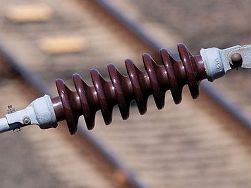 Ceramics - mixed and specially treated finely ground inorganic substances - is widely used in modern electrical engineering. The very first ceramic materials were obtained precisely by sintering powders, due to which a strong, heat-resistant, inert to most media, having low dielectric losses, resistant to radiation, capable of long-term work under conditions of variable humidity, temperature and pressure of the ceramic. And this is only part of the remarkable properties of ceramics.
Ceramics - mixed and specially treated finely ground inorganic substances - is widely used in modern electrical engineering. The very first ceramic materials were obtained precisely by sintering powders, due to which a strong, heat-resistant, inert to most media, having low dielectric losses, resistant to radiation, capable of long-term work under conditions of variable humidity, temperature and pressure of the ceramic. And this is only part of the remarkable properties of ceramics.
In the 50s, the use of ferrites (complex oxides based on iron oxide) began to grow actively, then they tried to use specially prepared ceramics in capacitors, resistors, high-temperature elements, for the manufacture of microcircuit substrates, and starting in the late 80s, in high-temperature superconductors . Later ceramic materials with the required properties ...
What tools are needed to perform electrical work
 To perform electrical work: dismantling and installing electrical wiring, installing and connecting various equipment, repairing electrical wiring, preparing plugs, holes and recesses for laying electrical wiring, etc., you will need a wide variety of tools - from simple screwdrivers, measuring instruments, right up to the shtroborez or punch.
To perform electrical work: dismantling and installing electrical wiring, installing and connecting various equipment, repairing electrical wiring, preparing plugs, holes and recesses for laying electrical wiring, etc., you will need a wide variety of tools - from simple screwdrivers, measuring instruments, right up to the shtroborez or punch.
The choice of tools for electrical work is largely dependent on the place of use (for example, homework, field work, work at the enterprise), as well as the professional skills of an electrician, electrician. It should be borne in mind that the speed and quality of the work performed will directly depend on the quality and functionality of the tool. Consider the most common tools, fixtures and materials needed to perform electrical work.There is no way to do without this tool ...
What is FPGA a simple language for beginners
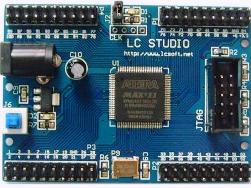 What is digital electronics associated with? First of all, with logical elements AND, OR, NOT. Further, shift registers, decoders, multiplexers, etc., come into memory. However, as the complexity of electronic devices and the trend towards miniaturization increase, the creation of IC-based devices from the above components became more difficult, custom ICs of the necessary topology and circuitry proved to be worthwhile only when the device was replicated in large numbers, in other cases it was unreasonably expensive.
What is digital electronics associated with? First of all, with logical elements AND, OR, NOT. Further, shift registers, decoders, multiplexers, etc., come into memory. However, as the complexity of electronic devices and the trend towards miniaturization increase, the creation of IC-based devices from the above components became more difficult, custom ICs of the necessary topology and circuitry proved to be worthwhile only when the device was replicated in large numbers, in other cases it was unreasonably expensive.
The way out of this situation was the development of programmable integrated logic circuits (abbreviated as FPGA, foreign abbreviation as programmable logic device, PLD). What is it and where is it used we will tell in this article. With the word "programmable", most beginners associate with microcontrollers.FPGA is a completely different device ...
Types of fuses for household appliances
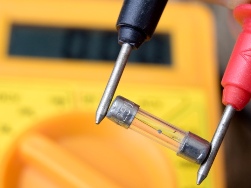 Those involved in the repair of equipment must have heard the joke: "The device burned out, protecting itself with a fuse." No matter how ridiculous it may sound, such situations happen quite often. Nevertheless, a fuse is an obligatory part of almost all types of household appliances. They are needed not only to protect the device itself, but also so that damage does not progress until fire. In this article we will tell you what fuses are used in household appliances.
Those involved in the repair of equipment must have heard the joke: "The device burned out, protecting itself with a fuse." No matter how ridiculous it may sound, such situations happen quite often. Nevertheless, a fuse is an obligatory part of almost all types of household appliances. They are needed not only to protect the device itself, but also so that damage does not progress until fire. In this article we will tell you what fuses are used in household appliances.
An electric fuse is a device or switching device designed to disconnect a circuit from a power source at a current significantly higher than the rated current. In simple words: if the device for some reason began to consume excessive current, the fuse will open the circuit.It is installed in series with the protected section of the circuit.Fuses or fuses are the most common because their device is simple, as is their manufacture ...
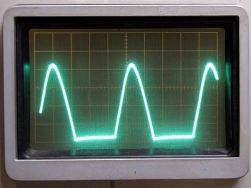 As you know, power plants produce alternating current. Alternating current is easily converted using transformers, it is transmitted through wires with minimal losses, many electric motors work on alternating current, in the end, all industrial and domestic networks today operate on alternating current.
As you know, power plants produce alternating current. Alternating current is easily converted using transformers, it is transmitted through wires with minimal losses, many electric motors work on alternating current, in the end, all industrial and domestic networks today operate on alternating current.
However, for some applications, alternating current is fundamentally unsuitable. Batteries need to be charged with direct current, electrolysis plants are powered by direct current, LEDs require direct current, and there is still much more to do without direct current, not to mention gadgets where batteries are originally used. One way or another, sometimes it is necessary to extract direct current from an alternating current by converting it, to solve this problem, they resort to rectifying the alternating current. For rectification of alternating current, diode rectifiers are used ...
Modern LED lights for the New Year
 What do you associate with this holiday? Probably a Christmas tree, tinsel, garlands ... right? Celebration is impossible without flickering lights. Garlands come in many forms and designs; they can consist of LEDs or incandescent bulbs. However, LED structures in our time have almost completely replaced other types of light sources. In this article we will look at what kind of LED strips are and which one to choose for the house, and which one to the street.
What do you associate with this holiday? Probably a Christmas tree, tinsel, garlands ... right? Celebration is impossible without flickering lights. Garlands come in many forms and designs; they can consist of LEDs or incandescent bulbs. However, LED structures in our time have almost completely replaced other types of light sources. In this article we will look at what kind of LED strips are and which one to choose for the house, and which one to the street.
Most LED lights are powered by 220 volts. It consists of one or more LED circuits. Such a connection allows you to assemble a chain that can be powered from a rectified mains voltage. If there are several chains, then one of the modes of operation of the garland can be implemented. In general, they distinguish: the static glow of the entire garland. Sometimes this mode is called "fixing"? scintillation or overflow - the alternate inclusion of different chains of garland ...
What is battery self-discharge?
 If the battery is not used for some time, keeping its external circuit open, then a few days later you can find that the voltage level at its terminals has become significantly lower than it was originally. This is due to the phenomenon of self-discharge - a normal phenomenon for any battery, but if self-discharge is too intense, then the norm develops into a problem - the capacity noticeably decreases, it would seem, for no apparent reason.
If the battery is not used for some time, keeping its external circuit open, then a few days later you can find that the voltage level at its terminals has become significantly lower than it was originally. This is due to the phenomenon of self-discharge - a normal phenomenon for any battery, but if self-discharge is too intense, then the norm develops into a problem - the capacity noticeably decreases, it would seem, for no apparent reason.
Let's look at this topic, consider the essence and ways of preventing this kind of trouble. It would be advisable to consider the problem of self-discharge by the example of a lead-acid battery in a car, because whoever, and motorists know firsthand how sometimes it can be overwhelming if the battery itself discharges simply while in a muffled car in a parking lot or in a garage, and its circuit was accurately open ...
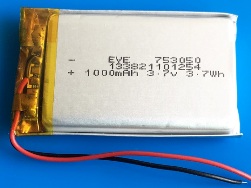 In the early 90s, when the industrial use of lithium-ion batteries was already gaining momentum, the first lithium batteries in the form of packages were developed - lithium-polymer batteries (designation “Li-Pol” or “Li-Po”). Thus, lithium polymer batteries have become a later type of lithium ion battery. But if a liquid electrolyte is used in lithium-ion batteries, then in lithium-polymer counterparts this is already a polymer composition, by gel consistency.
In the early 90s, when the industrial use of lithium-ion batteries was already gaining momentum, the first lithium batteries in the form of packages were developed - lithium-polymer batteries (designation “Li-Pol” or “Li-Po”). Thus, lithium polymer batteries have become a later type of lithium ion battery. But if a liquid electrolyte is used in lithium-ion batteries, then in lithium-polymer counterparts this is already a polymer composition, by gel consistency.
Due to the polymer base, batteries of this type have a higher specific energy intensity than others.It is for this reason that today lithium-polymer batteries are especially widely implemented in many mobile devices, where low weight is extremely important (gadgets, radio-controlled toys, etc.).A typical lithium polymer battery containsfour main parts in its design: anode, cathode, separator and electrolyte ...
